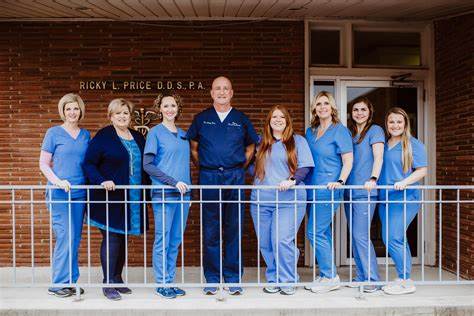
18 Nov Dentures: Who Invented Them?
Have you ever wondered who invented dentures? The quest to replace missing teeth has a rich history, spanning centuries and cultures. From ancient civilizations to modern innovations, the evolution of dentures reflects human ingenuity and the desire for improved oral health. Let’s explore four pivotal developments in the history of dentures. Each of these developments highlight significant advancements and show the incredible influence of the individuals behind them.
Ancient Innovations: The Etruscans and Early Denture Crafting
The story of dentures begins in ancient times, with the Etruscans of northern Italy around 700 BC. Renowned for their advanced metallurgy and craftsmanship, the Etruscans were among the first to create prosthetic dental devices. They ingeniously used gold bands to attach human and animal teeth, forming rudimentary dentures. These early attempts were primarily cosmetic, aiming to restore the appearance of a full set of teeth.
The Etruscans’ methods were innovative for their time. They drilled small holes into the replacement teeth and threaded them with gold wire, securing them to adjacent natural teeth. This technique provided a semblance of stability and functionality, allowing individuals to maintain a more natural appearance. While these dentures lacked the comfort and durability of modern prosthetics, they represent a significant milestone in dental history.
The Etruscans’ contributions laid the groundwork for future dental innovations. Their use of gold and understanding of dental aesthetics influenced subsequent cultures, including the Romans, who adopted and refined these techniques. This early experimentation underscores humanity’s enduring desire to address tooth loss and improve quality of life.
The 18th Century Revolution: Pierre Fauchard and the Birth of Modern Dentistry
The 18th century marked a transformative period in dental history, largely due to the pioneering work of French dentist Pierre Fauchard. Often referred to as the “father of modern dentistry,” Fauchard introduced comprehensive dental practices and innovations that revolutionized the field. In his seminal work, “Le Chirurgien Dentiste” (The Surgeon Dentist), published in 1728, he detailed various dental procedures, including the construction of dentures.
Fauchard’s dentures were crafted from carved blocks of ivory, typically sourced from elephants or hippopotamuses. He meticulously shaped these blocks to fit the patient’s mouth, creating a more comfortable and functional prosthetic compared to earlier versions. Fauchard also introduced the concept of springs to hold upper and lower dentures in place, enhancing their stability.
Fauchard’s work inspired subsequent generations of dentists to innovate and improve dental prosthetics. His emphasis on scientific methods and patient care transformed dentistry from a rudimentary trade into a respected medical profession. The advancements he introduced in denture fabrication set the stage for future developments in materials and techniques.
The 19th Century Breakthrough: Vulcanite and Dentures
The 19th century witnessed a significant breakthrough in denture fabrication with the introduction of vulcanite, a form of hardened rubber. This innovation is largely attributed to the American inventor Charles Goodyear, who developed the vulcanization process in 1839. Vulcanite provided a durable, lightweight, and cost-effective material for denture bases, revolutionizing the accessibility and affordability of dentures.
Prior to vulcanite, dentures were primarily made from materials like ivory, gold, or porcelain, which were expensive and time-consuming to produce. Vulcanite’s moldable properties allowed for mass production of denture bases that could be customized to fit individual patients. This development significantly reduced the cost of dentures, making them accessible to a broader segment of the population.
The use of vulcanite also improved the comfort and functionality of dentures. Its resilience provided a better fit and reduced irritation of the gums. Additionally, vulcanite could be colored to resemble natural gum tissue, enhancing the aesthetic appeal of dentures. This period marked the transition of dentures from luxury items to essential healthcare products.
The widespread adoption of vulcanite dentures had a profound impact on public health. Improved access to affordable dentures allowed individuals suffering from tooth loss to regain essential functions like chewing and speaking, thereby enhancing their overall quality of life. This democratization of dental care set the stage for future innovations in prosthetic dentistry.
The 20th Century and Beyond: Acrylic Resins and the Modern Denture
The 20th century ushered in the era of acrylic resins, which have become the standard material for denture fabrication. Polymethyl methacrylate (PMMA), a type of acrylic resin, offered several advantages over previous materials like vulcanite. Introduced in the 1930s, PMMA is lightweight, durable, and can be easily molded to create precise and comfortable dentures.
Acrylic resins allowed for greater customization in denture fabrication. Dental technicians could craft dentures that closely matched the natural appearance of a patient’s gums and teeth, enhancing both comfort and aesthetics. The material’s ease of manipulation also facilitated quicker production times, benefiting both patients and practitioners.
Advancements in acrylic technology have continued to improve denture quality. The development of high-impact acrylics has increased the durability of dentures, reducing the risk of fractures. Additionally, the integration of digital technologies, such as computer-aided design and manufacturing, has further refined the precision and fit of dentures.
Conclusion
The journey of denture invention reflects human creativity, resilience, and the drive to improve quality of life. From the early gold-and-animal-tooth models of the Etruscans to the modern, custom-fit acrylic dentures, each stage reveals advancements in materials, methods, and accessibility. Figures like Pierre Fauchard and Charles Goodyear made lasting impacts, turning dentures from rudimentary solutions into practical, essential healthcare products. Today’s dentures are not just functional but also comfortable and lifelike, continuing a tradition of innovation that has spanned centuries. As technology advances, the future of dentures promises even greater improvements, making dental health more accessible and transformative for people worldwide.
Wynne Downtown Dental offers full and partial dentures to our patients. If you are in need of any of these services, schedule an appointment with us today!

About Our Team
With over 30 years of expertise in the field of dentistry, our team here at Wynne Downtown Dental is ready to meet your needs. We’re passionate about educating our patients on improving their oral health and helping our patients get the smile they deserve.
